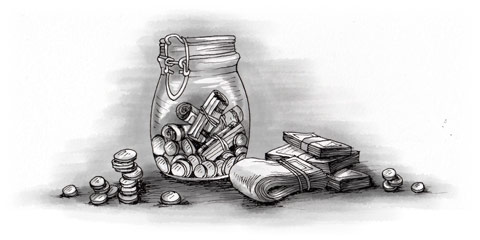Value of the cedi
The Ghanaian cedi went through quite a few changes up through 2007. Coins in Ghana went through three phases, and banknotes, four. Older forms of the cedi were withdrawn beginning in July of 2007, and six months after, the old currency was no longer legal tender.
The current Ghanaian cedi (GHS or ₵) is divided into 100 pesewas.
Coins and banknotes
Coins in circulation are in denominations of 1, 5, 10, 20 and 50 pesewas, and 1 cedi.
All Ghanaian banknotes are issued by the Bank of Ghana. They come in denominations of 1, 2, 5, 10, 20 and 50 cedi. The newest banknote is the 2 GHC, which was introduced on May 14, 2010, to meet the needs to have an intermediary banknote between the 1 GHC and 5 GHC, and to reduce the frequency and cost of manufacturing large volumes of the 1 GHC.
Appearance of the cedi
Both banknotes and coins coincide with value and size, meaning the larger the value, the larger the banknote or coin. The smallest coin is the copper 1 pesewa, which because of its low value and therefore uncommon use, is quite rare. A 1 cedi coin is similar in appearance to the euro.
On the face, or front, of every banknote, you will notice an image of six men. These men are known as the ‘Big Six,’ and represent the fathers of Ghanaian independence, including the first post-independence president, Kwame Nkrumah. Printed on the 2 GHC is “Centenary of the birth of Dr. Kwame Nkrumah,” as the introduction date of this bill coincides with the conclusion of the year-long centenary celebrations of the former president’s birth.

